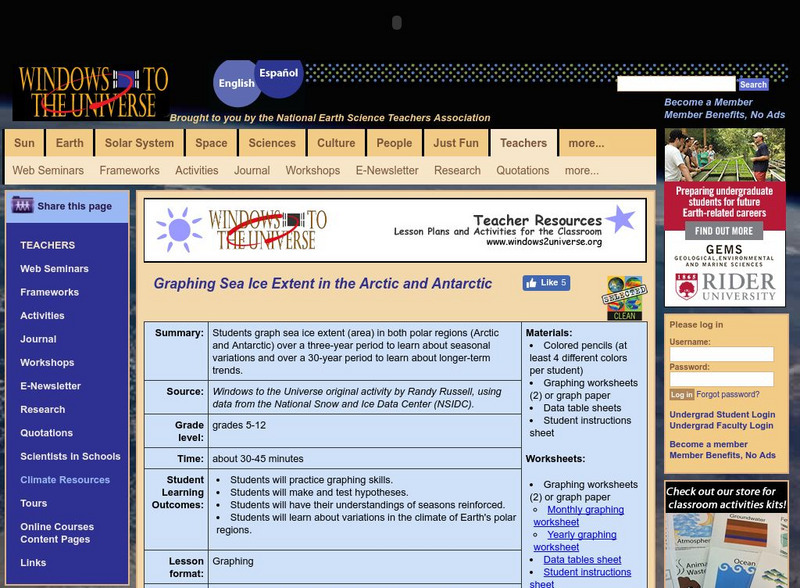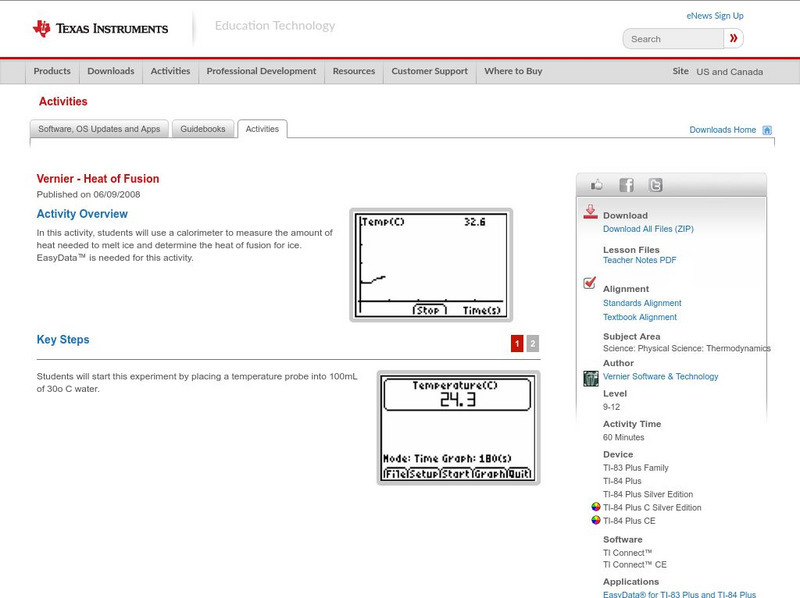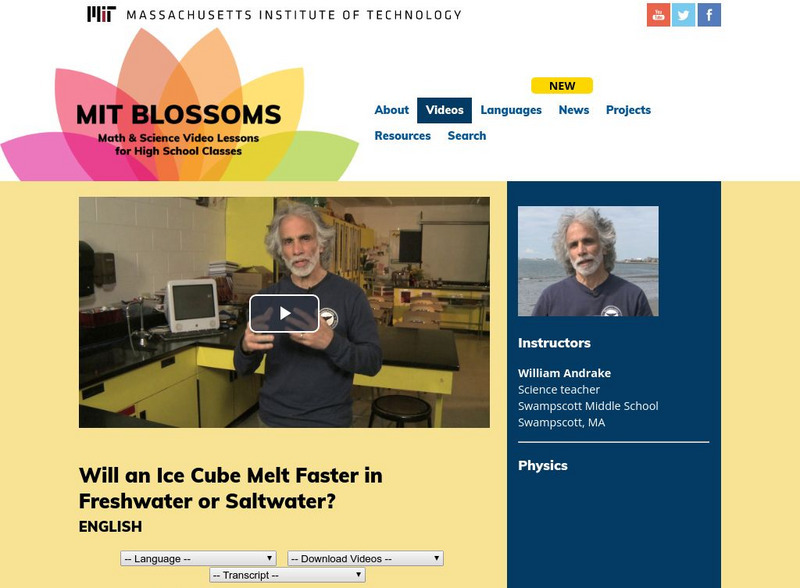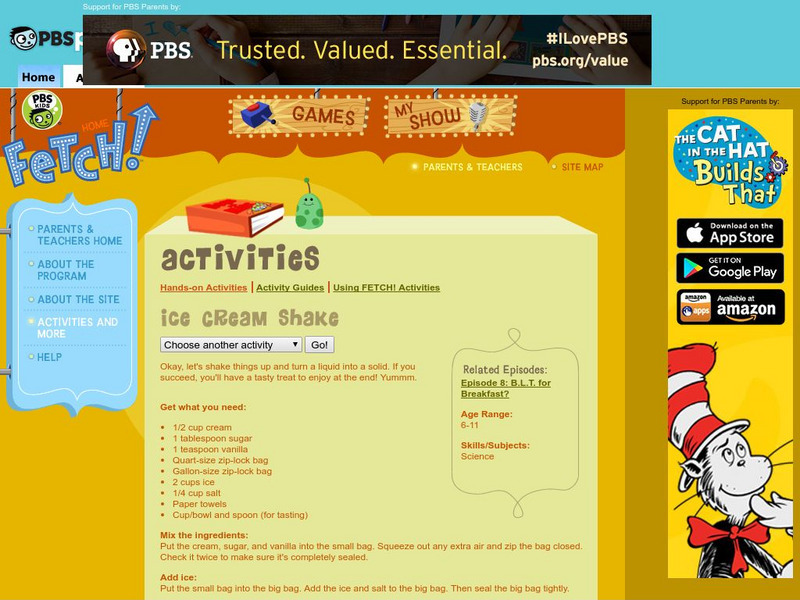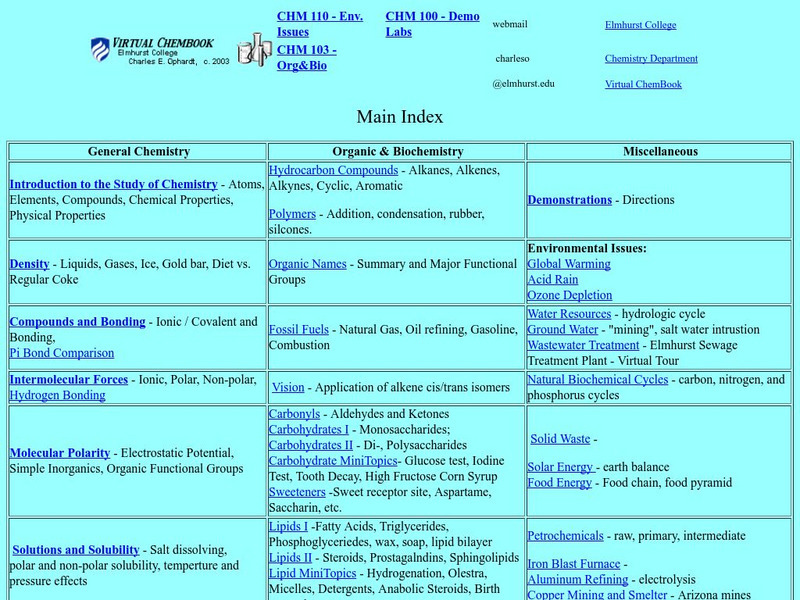NASA
Nasa: Polar Ice and Its Possible Effects on the Earth
This article describes the effects of polar ice caps on the Earth and offers explanations as to the possible effects of polar ice melting on sea level and temperature.
Climate Literacy
Clean: March of the Polar Bears: Global Change, Sea Ice, and Wildlife Migration
Young scholars use NASA satellite data to study temperature and snow-ice coverage in the South Beaufort Sea, Alaska. With the data, they investigate global change, sea ice changes, and polar bear migration.
National Earth Science Teachers Association
Windows to the Universe: Graphing the Extent of Sea Ice in Arctic and Antarctic
Students graph sea ice extent in both polar regions over a three-year period to learn about seasonal variations, and over a 30-year period to learn about longer-term trends.
PBS
Nova: Extreme Ice
Young scholars study how scientists monitor changes in Earth's glaciers, ice caps, and ice sheets. They investigate about glacier locations, glacial movement, and impacts of climate change on glaciers depending on the depth of research.
Texas Instruments
Texas Instruments: How Low Can You Go?
In this activity, Students can use an EasyTemp temperature probe to determine the normal melting temperature of ice. They will then study how the addition of salt to the melting ice affects its melting temperature. They will finally...
Texas Instruments
Texas Instruments: Heat of Fusion
In this activity, students can use a calorimeter to measure the amount of heat needed to melt ice and determine the heat of fusion for ice. EasyData is needed for this activity.
Massachusetts Institute of Technology
Mit: Blossoms: Will an Ice Cube Melt Faster in Freshwater or Saltwater?
Engage learners in the study of the ocean and saltwater with these activities. Students will see that saltwater has different physical properties than freshwater - mainly density. This lesson can serve as a springboard into other...
Society for Science and the Public
Science News for Students: Antarctica Warms, Which Threatens Penguins
Describes the threat of climate change in the Antarctica to emperor penguins by affecting the ice sheets where penguin breeding grounds are located.
University of Wisconsin
Uw: Probabilities, Uncertainties and Units Used to Quantify Climate Change
This resource engages learners in using scientific data to analyze a 150-year dataset from Lake Mendota in Madison Wisconsin reflecting seasonal ice cover.
Science Education Resource Center at Carleton College
Serc: Mn Step: Will the Cup of Water Overflow When the Ice Melts?
Learners predict and observe what happens when the ice cubes in a cup of water melt and displace water.
PBS
Pbs Teachers: Rising Ice Experiment
Observe how ice and salt crystals interact by using salt to help adhere a string to the top of an ice cube in a glass of water, then lift the cube out of the water.
University of Maryland
U. Of Maryland: Latent Heat: Ice to Water to Steam
A page from the University of Maryland Physics Lecture Demonstration Facility. Provides directions for a teacher demonstration of latent heat in the melting and vaporization process. Shows apparatus and set-up; provides suggestions....
Australian Broadcasting Corporation
Australian Broadcasting Corporation: News in Science: Glaciers Melting Faster as Planet Warms
From ABC News in Science, this article discusses climate change research which suggests that the worldwide issue of melting glaciers is a clear sign of changing climate conditions.
PBS
Pbs Teachers: Ice Cream Shake
Investigate states of matter while making ice cream. Explore how to turn a liquid into a solid by removing heat energy.
Climate Literacy
Clean: Sea Level Rise
Students will learn the difference between sea ice and glaciers in relation to sea level rise using topographic maps.
Other
Elmhurst College: Virtual Chembook: What Are Physical Properties and Changes?
Brief descriptions of physical properties, physical changes, and the process of sublimation. The three states of matter, melting point, and boiling point are described. There is one link on the page, which leads to an explanation of...
University of Maryland
University of Maryland: Regelation: Ice Under Pressure
A page from the University of Maryland Physics Lecture Demonstration Facility. Provides directions for a teacher demonstration on the phenomenon of regelation. Shows apparatus and set-up; provides suggestions. Easily adaptable as a...
National Earth Science Teachers Association
Windows to the Universe: Changing Planet: Melting Glaciers
Young scholars sort photographs of glaciers and measure glacial retreat to observe how alpine glaciers have retreated over the past century. Includes a printable worksheet, links to relevant materials, and extension activities.
Other
Digital Library for Earth System Education: Changing Sea Level
A suite of lessons lead inquiry-based exploration of melting sea ice and evidence that it is affecting sea level, namely glacial evidence, geologic evidence, fossil evidence, and isotopic evidence.
Smithsonian Institution
Smithsonian Environmental Research Center: Arctic: A Friend Acting Strangely
Discover the devastating effects of climate change on an Inuit Arctic community in northern Canada. The melting sea ice caused by global warning has started a chain reaction of many changes in the culture and survivability in the Arctic...
PBS
Pbs Learning Media: Greenland Mass Variation Since 2002
Scientists study ice sheets because they influence weather and climate, playing a role in atmospheric and ocean circulation. Ice sheets can also have huge impacts on global sea levels because they store so much water. Explore this...
Woods Hole Oceanographic Institution
Polar Discovery: The Greenland Glacier Expedition: July 7 July 24, 2008
This polar expedition took place in 2008, but you can still experience the thrill of following these scientists as they engage in research studying the changes in Greenland's ice sheet. Meet the research team and learn about the...
PBS
Pbs Nova: Glacier Hazards From Space
View a satelite-generated slideshow that shows some of the hazards that glaciers pose as they break away or melt.
PBS
Pbs Kids: Dragonfly Tv Try This!
A collection of simple experiments your students will enjoy! Each activity only requires a few household items, and will certainly spark the creativity in young scientists!
Other popular searches
- Ice Cube Melting Experiment
- Ice Melting
- Melting Ice Cubes
- Ice Melting Kindergarten
- Ice Melting Investigation
- Ice Melting and Freezing
- Iceberg Melting Rate
- Ice Melting Point
- Science Lessons Melting Ice
- Science Ice Melting
- Polar Ice Caps Melting
- Ice Melting Data




